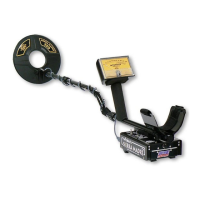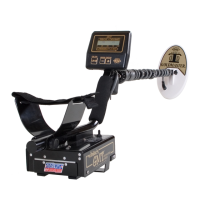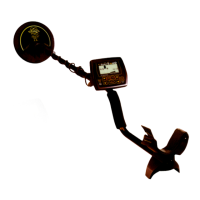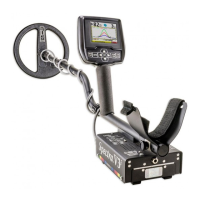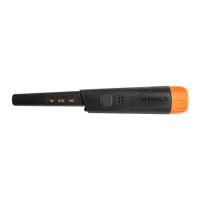Page 13
MX5
Owner’s Manual
Target ID & Tones
The MX5 has two methods of target identification: visual
and audio. The visual consists of the 2-digit VDI number that is
displayed plus a cursor that appears across the top of the screen
pointing at the VDI zone the target belongs in. The 20 VDI
zones are labeled as follows:
The span of each zone begins at the number directly above
the zone and extends to the edge of the next zone. Some exam-
ple zones are [-95 to -71], [-10 to -1], [+0 to +4], [+70 to +79],
and [+90 to +95]. A target with a VDI of 78 will move the cur-
sor to the zone marked “70” as shown.
In addition to the visual ID, the MX5 can also produce a
tone ID. There are up to 2 tone modes depending on the search
mode:
• 1 tone — Coin, Beach: Accepted targets produce a single
tone. Rejected targets usually create a “null” in the threshold
tone and do not otherwise produce a response, although you
may hear a short audio chirp as the target is being rejected.
• 2 tones — Coin, Beach: Accepted targets at or above 0 pro-
duce a high tone, accepted targets below 0 produce a low
tone, and rejected targets produce a null.
• 8 tones — There are 8 different tones for 8 VDI ranges:
Coin, Beach, & Relic
1 -95 to -21
2 -20 to 0
3 +1 to +14
4 +15 to +29
5 +30 to +49
6 +50 to +59
7 +60 to +69
8 +70 to +95

